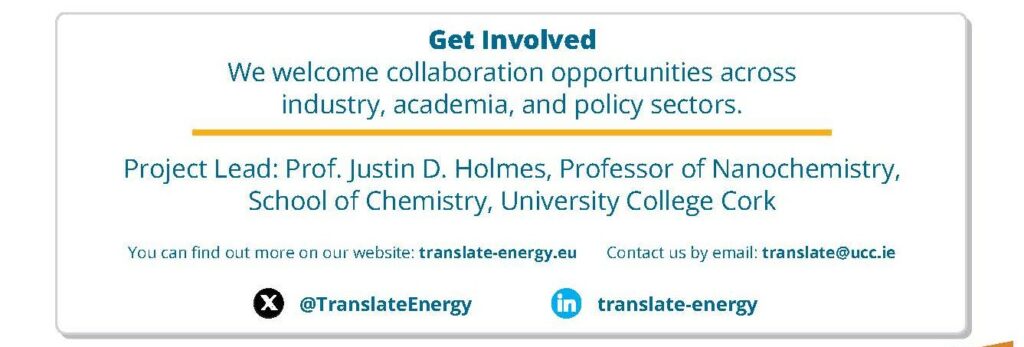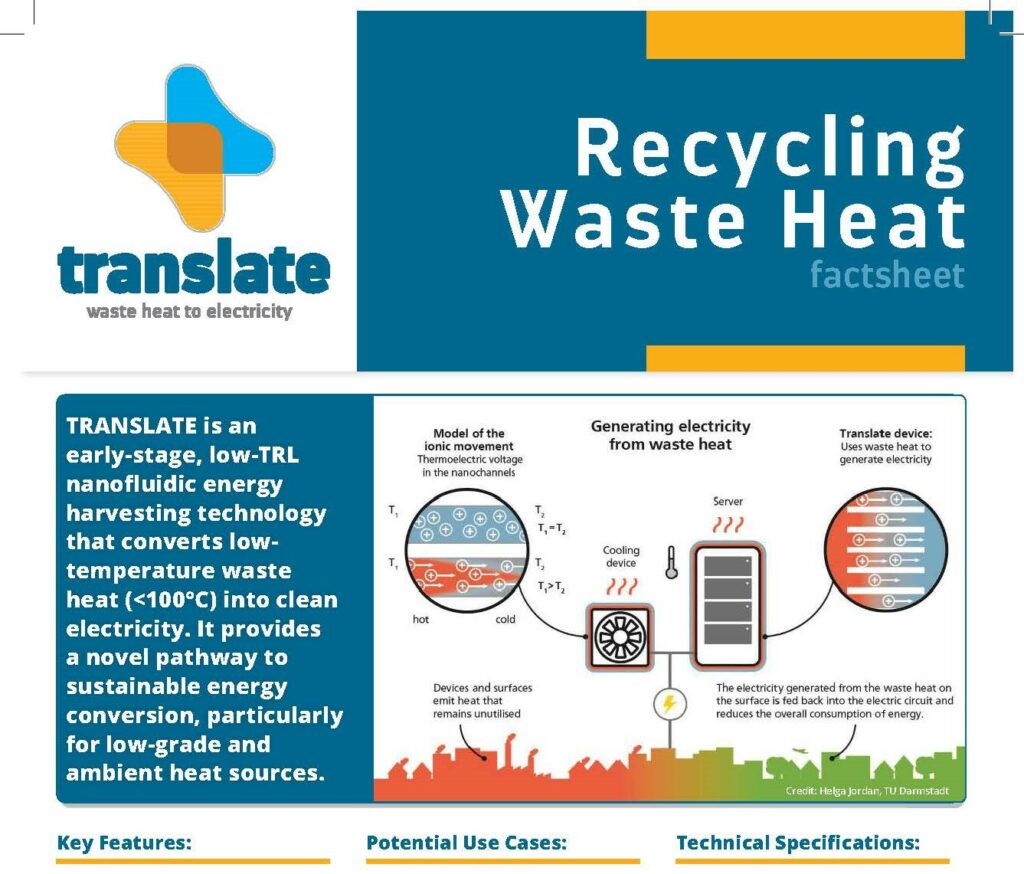The TRANSLATE project is making strides in the field of energy conversion with its cutting-edge nanofluidic technology. To capture our progress, we’ve launched a TRANSLATE factsheet. Download the full factsheet here.
Here are key insights from TRANSLATE:
Technology Overview
- Nanofluidic Membranes: Utilising ion flux in nanochannels to convert thermal gradients into electrical energy.
- Low-Temperature Operation: Effective at temperatures below 100°C, ideal for harnessing waste heat.
Efficiency and Environmental Impact
- High Conversion Efficiency: Promising significant energy conversion efficiency at low temperatures.
- Eco-Friendly Materials: Employing Earth-abundant, environmentally benign materials and aqueous NaCl electrolyte.
Potential Applications
- Wearable Technology: Powering medical devices and fitness trackers.
- Consumer Electronics: Enabling self-charging devices.
- IoT and Sensor Networks: Providing energy for distributed IoT devices and environmental sensors.
Technical Specifications
- Materials: Earth-abundant, biocompatible nanofluidic membranes.
- Power Output: Suitable for ultra-low power systems.
- Scalability: Ideal for small-scale applications.
Future Directions
- Energy Storage Integration: Exploring compatibility with next-gen supercapacitors or batteries.
- Ongoing R&D: Focused on improving ion transport and membrane stability.

For more detailed information, download the full TRANSLATE factsheet available on our website or Zenodo.


